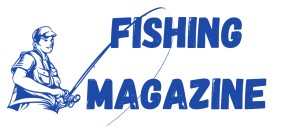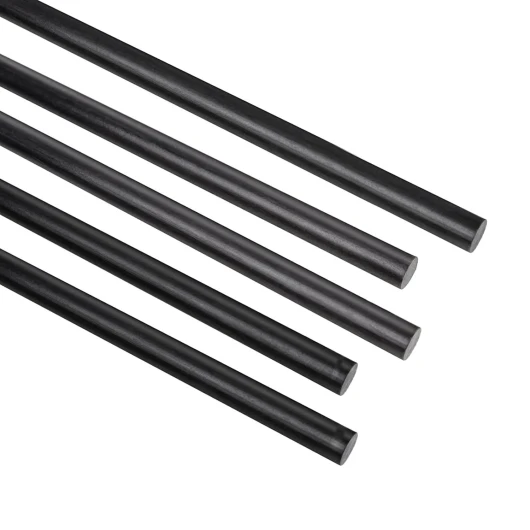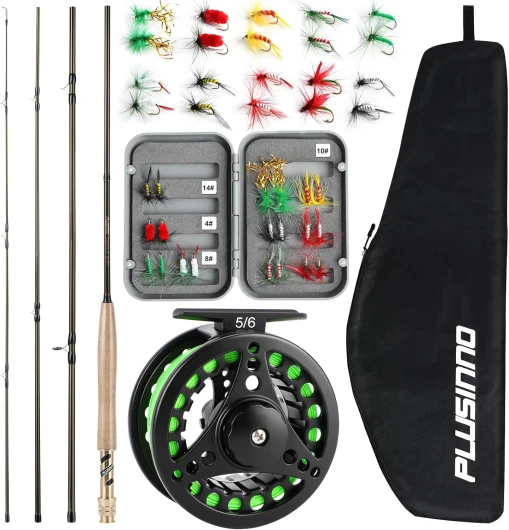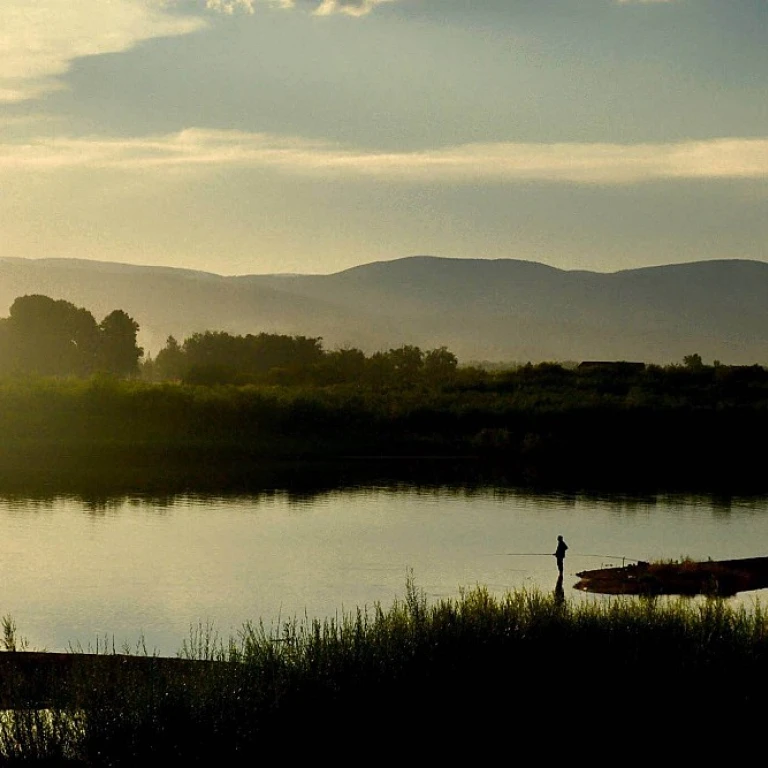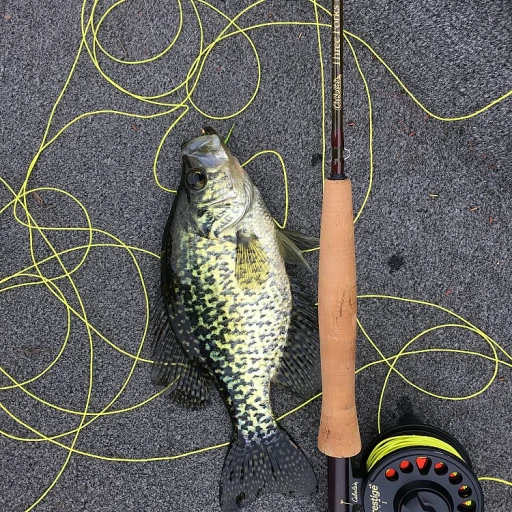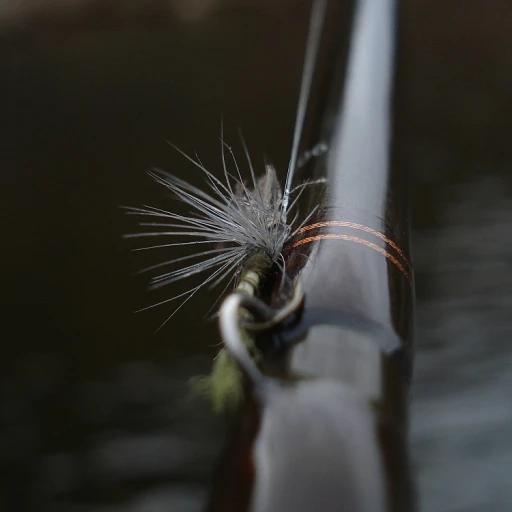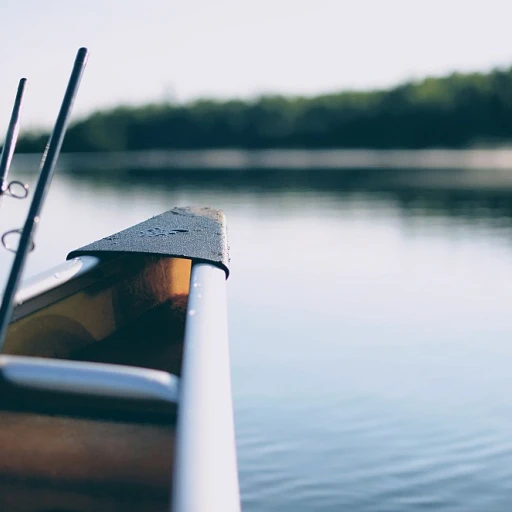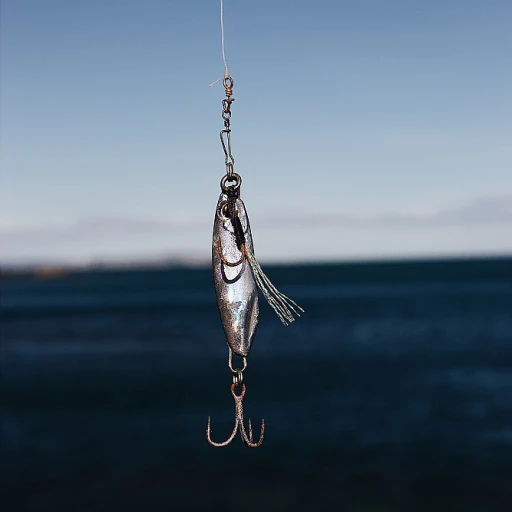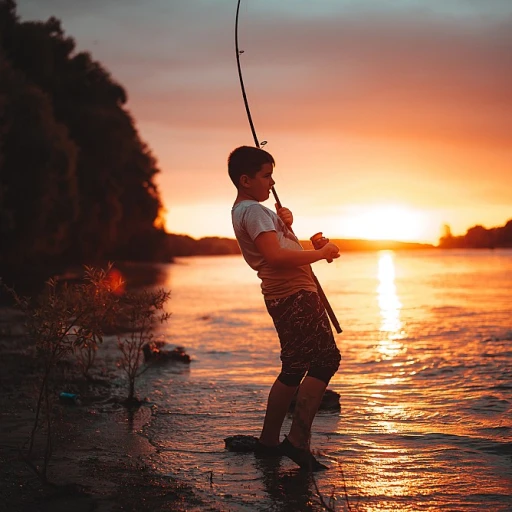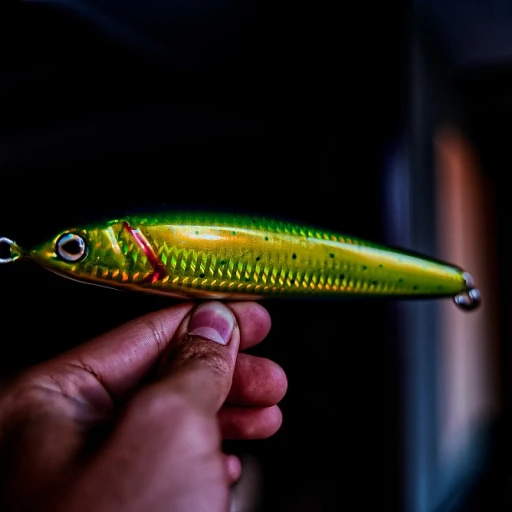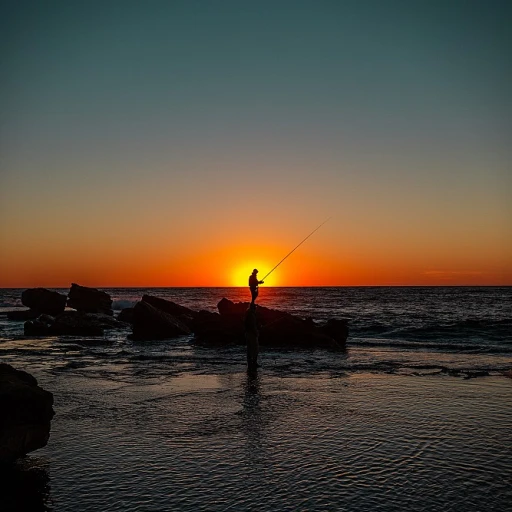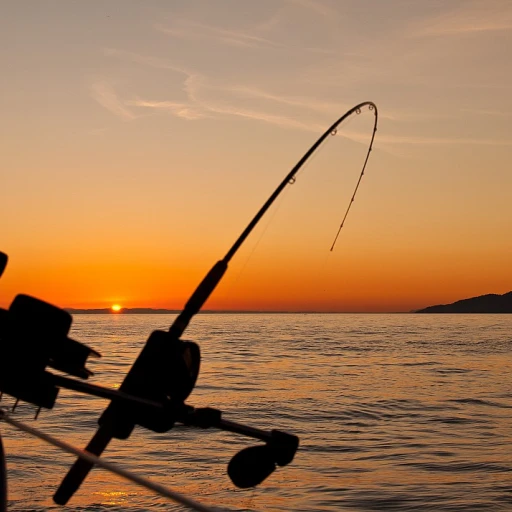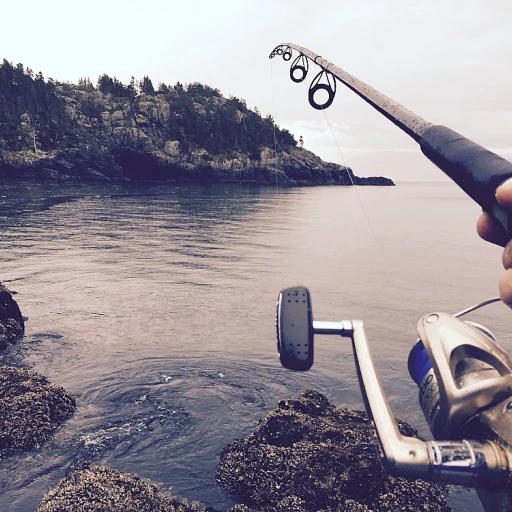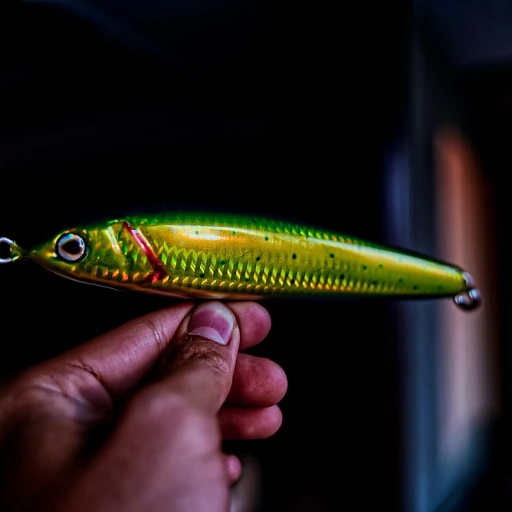
Understanding Fly Rods
The Foundation of Fly Fishing Gear
Delving into the intricate landscape of fly rods is key to enhancing your fly fishing experience. These rods aren't just tools; they're the cornerstone of precision in fishing. Whether you're luring a classic trout from a small stream or aiming for the expansive saltwater, understanding your gear lays the foundation for success on the water.
Fly rods are uniquely designed for casting very light artificial flies. Unlike traditional fishing rods used with heavy lures, these rods utilize the weighted fly line itself for casting. This unique setup allows for a more delicate presentation of flies, assisting in tricking even the most wary fish.
Fly rods come in a wide variety of weights and actions, each suited to different types of fishing, from the fast action rods ideal for casting in windy conditions to the moderate fast action suited for presenting dry flies in small creeks. When selecting the right combination, considering the targeted species, such as trout or bass, is crucial. The rod’s weight, indicated in numbers like a 5-weight fly rod, will relate to the line weight and help determine the rod’s bending strength and flexibility.
For newcomers eager to understand where to begin, visiting a fly shop can provide firsthand experience and expert guidance. You’ll find original fly rods catering to varying skill levels, with options for both saltwater and freshwater experiences. With prices ranging from budget-friendly models at regular price to more advanced series fly rods, there’s something for every angler.
Comprehending these details not only enhances your ability to choose the right rod but also increases your overall enjoyment of fly fishing. Keen anglers often explore more specialized techniques, such as mastering seasonal fly patterns to boost their catch rate.
Key Features to Consider
Pinpointing the Attributes of a Quality Fly Rod
When delving into the world of fly rods, there are several key features that anglers should prioritize to enhance their fly fishing experience. Understanding these aspects can make all the difference, whether you’re casting your fly in freshwater or venturing into saltwater terrains.
- Weight: The weight of a fly rod, commonly ranging between 1 to 12 weights, has a significant impact on the type of fish you aim to catch. Lighter weights, like a 3 or 4, are suited for smaller fish and delicate presentations in small creeks or streams. Heavier weights, such as 8 or 9, are ideal for larger species and saltwater scenarios.
- Action: Fly rod action refers to how much and how quickly a rod flexes. Fast action rods provide powerful and long casts, ideal for larger water bodies, while moderate fast and medium fast rods offer a more forgiving flexibility for precision casting. Lovers of traditional approaches may prefer the smooth casting of a classic trout rod.
- Material and Build: Modern fly rods combine materials like graphite and fiberglass to balance strength and sensitivity. Quality rods, often in a series, boast durability to withstand the rigors of both freshwater and saltwater environments.
- Reel Seat and Guides: Made to secure your fly reel, the reel seat should complement the rod's overall performance. Guides facilitate smooth casting by reducing friction; hence, higher-quality guides can significantly impact your fishing.
- Price Consideration: Fly rods come with a wide price range. While premium rods can be costly, several units offer excellent quality at a regular price. Balancing budget with requisite features ensures a worthwhile investment.
For those investing in fly fishing equipment, dissecting these attributes aligns your choice with specific fishing pursuits, from tackling small trout with a weight fly or euro nymphing technique to taking on powerful saltwater giants. Remember, the original fly rods that stand the test of time will serve your angling needs for years to come.

- + Ultra Fast Action for quick response
- + Versatile lengths: 9’ LW4, LW5, LW6, 9’LW5/6, 9’6” LW6/7
- + Four-piece design for easy transport
- + Includes an extra tip for added value
- + Great value for performance with price
Choosing the Right Fly Rod for Your Needs
Finding the Perfect Match for Your Fly Fishing Adventures
Choosing the right fly rod is a crucial step in enhancing your fly fishing experience. Whether you're casting in tranquil freshwater creeks or tackling the challenges of saltwater environments, the right fly rod can make all the difference. Here, we'll guide you on what to consider as you embark on selecting the perfect fly rod tailored to your fishing needs.
When evaluating fly rods, one of the primary aspects to consider is the weight. The weight of the fly rod is crucial as it should be compatible with the type of fish you're targeting. For instance, a 3-weight fly rod is a great choice for small creek fishing or catching trout, whereas a heavier 8 or 9-weight rod is more suitable for larger saltwater fish.
The action of the fly rod is another significant factor. Different rod actions, such as fast, medium fast, and moderate fast, cater to various casting styles and fishing environments. A fast action fly rod is ideal for making long casts and dealing with windy conditions, while a medium fast rod may offer a more classic trout fishing experience, providing flexibility for various casting techniques.
Consider the rod length as well, which usually ranges between 7 to 10 feet. Shorter rods excel in tight spots and small streams, while longer rods provide better reach in open water and offer more control when casting dry flies.
Moreover, your choice should also align with the intended use—whether for freshwater or saltwater fishing. Certain materials and finishes are engineered to withstand the harsh saltwater conditions, making them a go-to option when targeting saltwater species.
Finally, don't overlook your budget. The unit price of fly rods can vary widely. Brands often present a lineup of series fly rods, allowing you to choose between more affordable options and high-end original models. Ensure the selected rod meets both your fishing requirements and budget constraints.
With these considerations in mind, you can feel confident approaching your local fly shop to begin your adventure. And for those keen to broaden their fishing techniques, check out our comprehensive guide on mastering the art of darter fishing.
Popular Fly Rod Brands and Models
Well-Known Brands and Models in the Fly Rod Market
When delving into the vast world of fly fishing, selecting from a plethora of well-known brands and models can be overwhelming. However, understanding the unique offerings by these brands can significantly enhance your fishing experience, ensuring you get value for the price paid.
Many fly rods come equipped with distinct features tailored for various fishing needs. Let’s explore some of the leading manufacturers that cater to both freshwater and saltwater environments:
- Sage: Recognized for their fast action rods, Sage provides a wide range of options for enthusiasts who frequent freshwater and saltwater fishing. The Sage X series is particularly notable for its lightweight design, perfect for carrying through small creeks and casting dry flies.
- Orvis: Known for an extensive lineup, Orvis offers rods with various weights designed to tackle both trout and larger saltwater fish. Their Clearwater series is popular for those seeking quality at a regular price.
- G. Loomis: If you’re looking for fast and moderate fast action options, G. Loomis has you covered. Their NRX series fly rods are revered among experienced anglers for their precision and strength.
- Redington: Perfect for beginners, Redington provides rods that don’t break the bank. Their Classic Trout fly rod, for instance, offers an excellent combination of performance and affordability.
For those into specialized fishing techniques like trout spey or euro nymphing, it's crucial to choose a rod that supports small stream fishing, offering the right balance and action to handle the nuanced casting style.
Ultimately, when considering a fly rod, focusing on the build, feel, and performance is vital. Explore your local fly shop or trusted online retailers to get a close view of these rods. Look for deals that offer a fair unit price for both the rod and fly reel, ensuring you’re well-equipped for any fly fishing challenge ahead.
Maintenance and Care Tips
Keeping Your Fly Rod in Prime Condition
Taking proper care of your fly rod can prolong its life and enhance your fishing experience. Here are some tips to help you maintain your fly rods in top condition:- Clean Regularly: After each use, especially in saltwater conditions, rinse your rod with fresh water to remove salt, dirt, and grime. This prevents corrosion and ensures the longevity of your fishing gear.
- Inspect for Damage: Frequently check the rod for any signs of damage such as cracks or loose guides. Inspect the reel seat and ensure the reel is securely attached. Prompt repairs can prevent further issues when you're out fishing.
- Store Properly: Store your rods in a cool, dry place. Use a protective case to avoid accidental damage and keep them away from direct sunlight, which can degrade materials over time.
- Handle with Care: When moving between fishing spots or navigating small creeks and streams, be cautious to avoid snagging your rod on brush or rocks.
- Regular Maintenance: Lubricate moving parts like the reel seat and the ferrules with products specifically designed for fly rods. This helps ensure smooth performance and longer lifespan.
Common Mistakes to Avoid
Steering Clear of Common Pitfalls
As exciting as fly fishing can be, there are a few common mistakes that enthusiasts often encounter. Understanding these missteps can save you time, money, and many opportunities on the water.
- Ignoring the Weight of Your Fly Rod: Ensure you select the correct weight fly rod for the fish you are targeting. For instance, small stream trout require a lighter rod, while saltwater fish demand a more robust option.
- Overlooking Action Type: The action of your rod affects casting performance. Fast action rods are ideal for windy conditions, while moderate fast and medium fast options offer greater versatility in calmer environments.
- Underestimating Environmental Impact: Ensure your gear is suitable for either freshwater or saltwater conditions. Saltwater can be particularly harsh on equipment not designed to withstand its challenges.
- Narrow Focus on Price Over Quality: While the market offers rods at various price points, it's essential to balance the unit price with craftsmanship and durability, particularly from reputable series like those for trout spey or euro nymphing.
- Overlooking Reel Compatibility: Pairing your fly rod with an appropriate fly reel is critical. The reel contributes to balance and effective line management, influencing your success with both dry flies and weight forward lines.
Attending to these factors not only helps maintain the longevity of your fly fishing gear but also enhances your overall experience whether you are fishing in freshwater or saltwater, small creeks or larger lakes.
